Special Report
This Is the City in Every State Where COVID-19 Is Growing the Fastest

Published:
Last Updated:

The U.S. has reported more than 33.4 million confirmed COVID-19 cases as of July 14. There have been more than 601,000 reported deaths from COVID-19-related causes — the highest death toll of any country.
The extent of the spread of the novel coronavirus continues to vary considerably from state to state, and from city to city. Even as the number of daily new cases is flattening or even declining in some parts of the country, it is surging at a growing rate in others.
Nationwide, the number of new cases is growing at a steady rate. There were an average of 4.3 daily new coronavirus cases per 100,000 Americans in the week ending July 14, essentially unchanged from the week prior, when there were an average of 3.5 daily new coronavirus cases per 100,000 people.
Metropolitan areas with a high degree of mobility and a large population may be particularly vulnerable to outbreaks. While science and medical professionals are still studying how exactly the virus spreads, experts agree that outbreaks are more likely to occur in group settings where large numbers of people routinely have close contact with one another. Cities with high concentrations of dense spaces such as colleges, correctional facilities, and nursing homes are particularly at risk.
The city with the highest seven-day average of new daily COVID-19 cases per capita is in Missouri. In the Springfield, MO, metro area, there were an average of 48.6 daily new coronavirus cases per 100,000 residents in the week ending July 14, the most of any U.S. metro area. Other cities where COVID-19 is growing the fastest include Joplin, MO; Cheyenne, WY; and St. Joseph, MO-KS.
To determine the metropolitan area in each state where COVID-19 is growing the fastest, 24/7 Wall St. compiled and reviewed data from state and local health departments. We ranked metropolitan areas according to the average number of new daily COVID-19 cases per 100,000 residents in the seven days ending July 14. Data was aggregated from the county level to the metropolitan area level using boundary definitions from the U.S. Census Bureau. Population data used to adjust case and death totals came from the U.S. Census Bureau’s 2019 American Community Survey and are five-year estimates. Unemployment data is from the Bureau of Labor Statistics and is seasonally adjusted.

Alabama: Mobile
Avg. new daily cases in Mobile in week ending July 14: 10.3 per 100,000
Avg. new daily cases in Mobile in week ending July 7: 6.3 per 100,000
COVID-19 cases in Mobile as of July 14: 44,436 (10,318.2 per 100,000)
Peak pandemic unemployment in Mobile: 15.4% (April 2020)
Mobile population: 430,655 (186.5 people per sq. mi.)
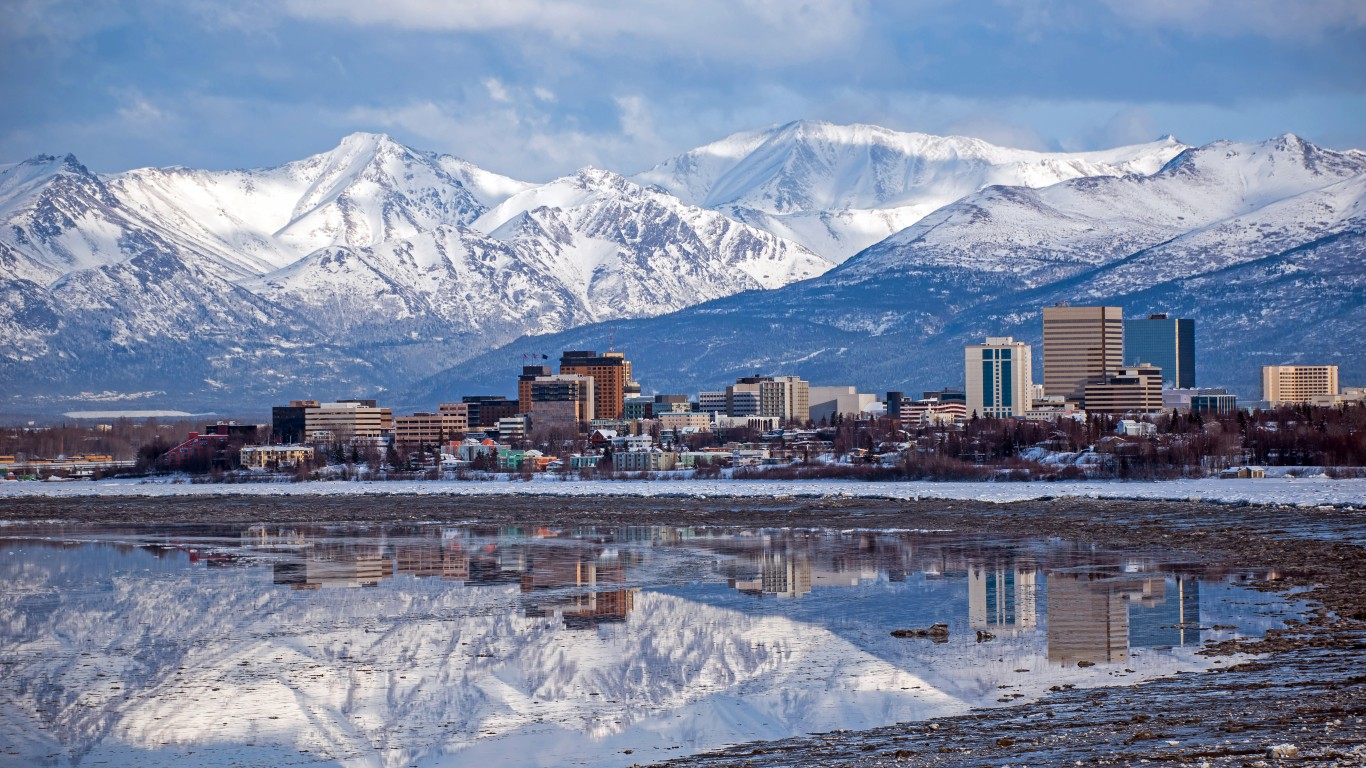
Alaska: Anchorage
Avg. new daily cases in Anchorage in week ending July 14: 7.1 per 100,000
Avg. new daily cases in Anchorage in week ending July 7: 5.6 per 100,000
COVID-19 cases in Anchorage as of July 14: 43,314 (10,858.4 per 100,000)
Peak pandemic unemployment in Anchorage: 14.8% (April 2020)
Anchorage population: 398,900 (15.2 people per sq. mi.)
These are all the counties in Alaska where COVID-19 is slowing (and where it’s still getting worse).

Arizona: Lake Havasu City-Kingman
Avg. new daily cases in Lake Havasu City in week ending July 14: 16.0 per 100,000
Avg. new daily cases in Lake Havasu City in week ending July 7: 15.3 per 100,000
COVID-19 cases in Lake Havasu City as of July 14: 24,013 (11,561.7 per 100,000)
Peak pandemic unemployment in Lake Havasu City: 19.8% (April 2020)
Lake Havasu City population: 207,695 (15.6 people per sq. mi.)

Arkansas: Hot Springs
Avg. new daily cases in Hot Springs in week ending July 14: 23.9 per 100,000
Avg. new daily cases in Hot Springs in week ending July 7: 12.6 per 100,000
COVID-19 cases in Hot Springs as of July 14: 10,742 (10,899.5 per 100,000)
Peak pandemic unemployment in Hot Springs: 16.4% (April 2020)
Hot Springs population: 98,555 (145.4 people per sq. mi.)

California: Yuba City
Avg. new daily cases in Yuba City in week ending July 14: 6.4 per 100,000
Avg. new daily cases in Yuba City in week ending July 7: 4.2 per 100,000
COVID-19 cases in Yuba City as of July 14: 16,324 (9,464.9 per 100,000)
Peak pandemic unemployment in Yuba City: 16.8% (April 2020)
Yuba City population: 172,469 (139.7 people per sq. mi.)

Colorado: Grand Junction
Avg. new daily cases in Grand Junction in week ending July 14: 25.6 per 100,000
Avg. new daily cases in Grand Junction in week ending July 7: 29.1 per 100,000
COVID-19 cases in Grand Junction as of July 14: 17,464 (11,548.9 per 100,000)
Peak pandemic unemployment in Grand Junction: 12.5% (April 2020)
Grand Junction population: 151,218 (45.4 people per sq. mi.)
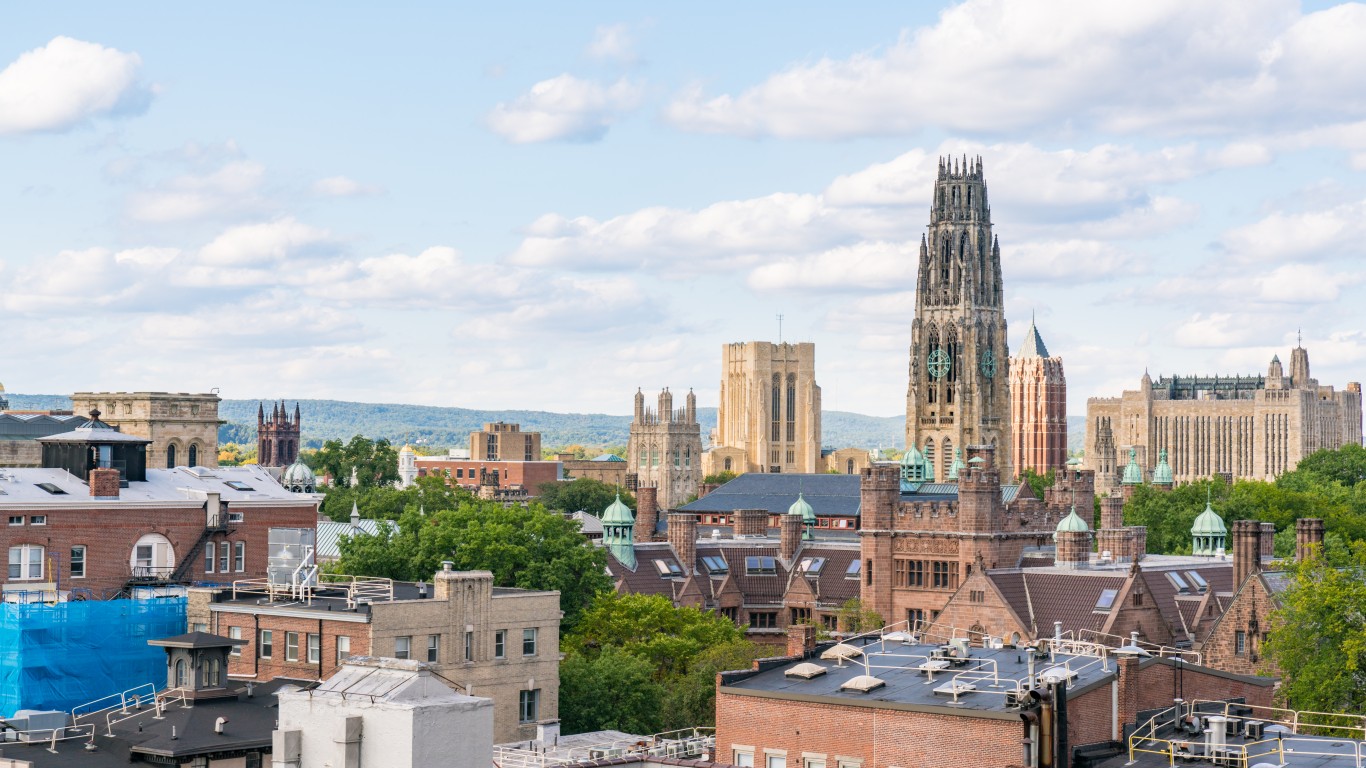
Connecticut: New Haven-Milford
Avg. new daily cases in New Haven in week ending July 14: 1.9 per 100,000
Avg. new daily cases in New Haven in week ending July 7: 1.7 per 100,000
COVID-19 cases in New Haven as of July 14: 92,519 (10,789.2 per 100,000)
Peak pandemic unemployment in New Haven: 9.5% (July 2020)
New Haven population: 857,513 (1,418.5 people per sq. mi.)

Delaware: Dover
Avg. new daily cases in Dover in week ending July 14: 2.7 per 100,000
Avg. new daily cases in Dover in week ending July 7: 1.9 per 100,000
COVID-19 cases in Dover as of July 14: 18,272 (10,340.7 per 100,000)
Peak pandemic unemployment in Dover: 17.3% (May 2020)
Dover population: 176,699 (301.4 people per sq. mi.)

Florida: Jacksonville
Avg. new daily cases in Jacksonville in week ending July 14: 17.4 per 100,000
Avg. new daily cases in Jacksonville in week ending July 7: 11.8 per 100,000
COVID-19 cases in Jacksonville as of July 14: 161,453 (10,737.9 per 100,000)
Peak pandemic unemployment in Jacksonville: 11.4% (April 2020)
Jacksonville population: 1,503,574 (469.7 people per sq. mi.)
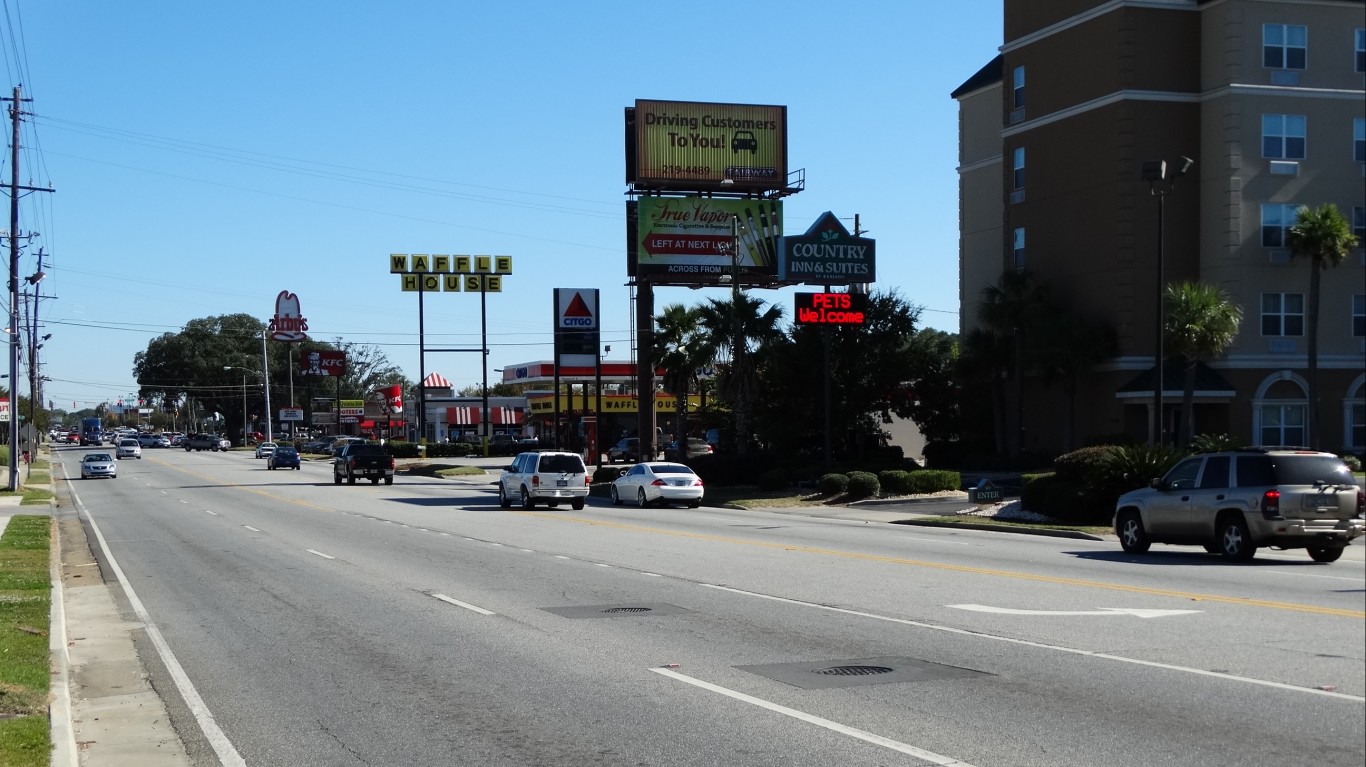
Georgia: Valdosta
Avg. new daily cases in Valdosta in week ending July 14: 6.4 per 100,000
Avg. new daily cases in Valdosta in week ending July 7: 6.7 per 100,000
COVID-19 cases in Valdosta as of July 14: 15,811 (10,880.5 per 100,000)
Peak pandemic unemployment in Valdosta: 10.3% (April 2020)
Valdosta population: 145,315 (91.4 people per sq. mi.)

Hawaii: Urban Honolulu
Avg. new daily cases in Urban Honolulu in week ending July 14: 3.0 per 100,000
Avg. new daily cases in Urban Honolulu in week ending July 7: 2.5 per 100,000
COVID-19 cases in Urban Honolulu as of July 14: 28,103 (2,853.6 per 100,000)
Peak pandemic unemployment in Urban Honolulu: 20.7% (April 2020)
Urban Honolulu population: 984,821 (1,639.3 people per sq. mi.)
These are all the counties in Hawaii where COVID-19 is slowing (and where it’s still getting worse).
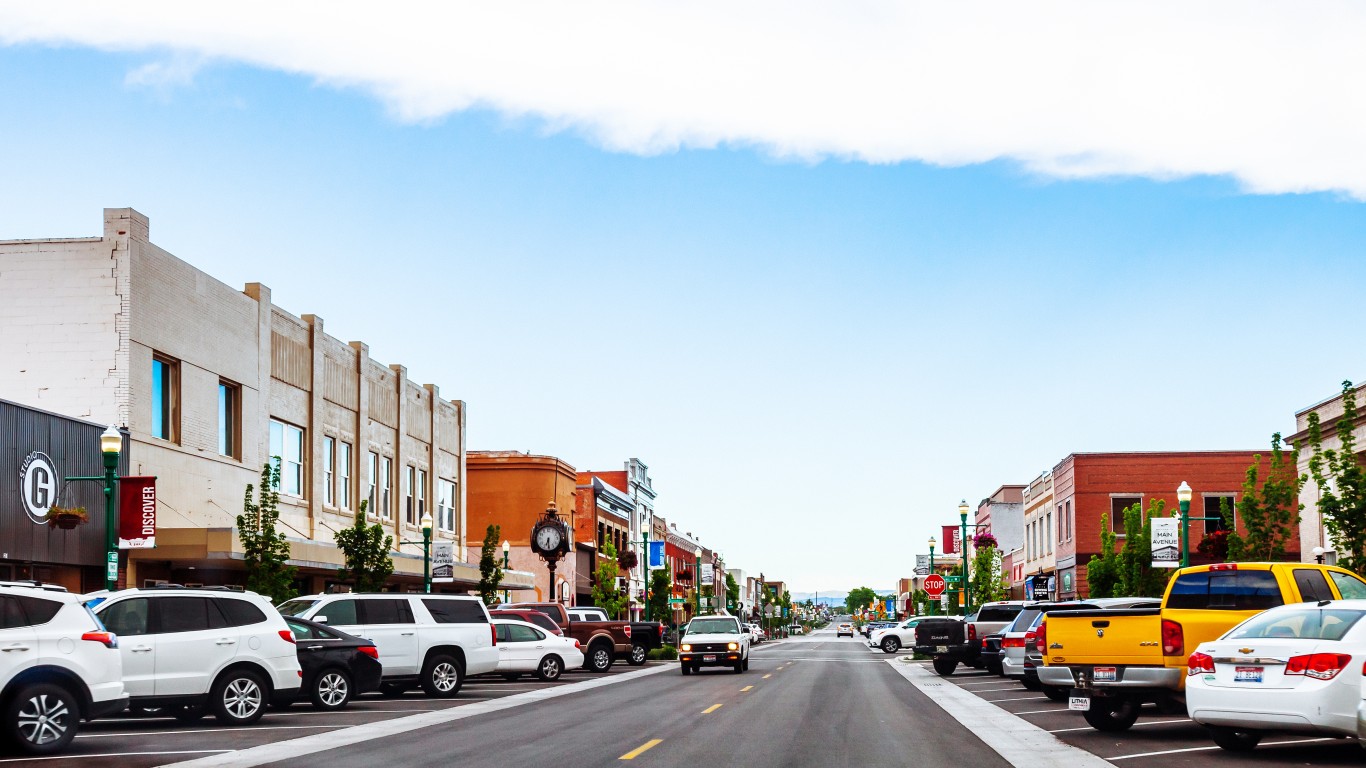
Idaho: Twin Falls
Avg. new daily cases in Twin Falls in week ending July 14: 8.4 per 100,000
Avg. new daily cases in Twin Falls in week ending July 7: 4.8 per 100,000
COVID-19 cases in Twin Falls as of July 14: 12,517 (11,525.9 per 100,000)
Peak pandemic unemployment in Twin Falls: 10.6% (April 2020)
Twin Falls population: 108,599 (43.1 people per sq. mi.)
These are all the counties in Idaho where COVID-19 is slowing (and where it’s still getting worse).

Illinois: Carbondale-Marion
Avg. new daily cases in Carbondale in week ending July 14: 6.0 per 100,000
Avg. new daily cases in Carbondale in week ending July 7: 4.6 per 100,000
COVID-19 cases in Carbondale as of July 14: 14,308 (10,400.3 per 100,000)
Peak pandemic unemployment in Carbondale: 18.1% (April 2020)
Carbondale population: 137,573 (102.0 people per sq. mi.)
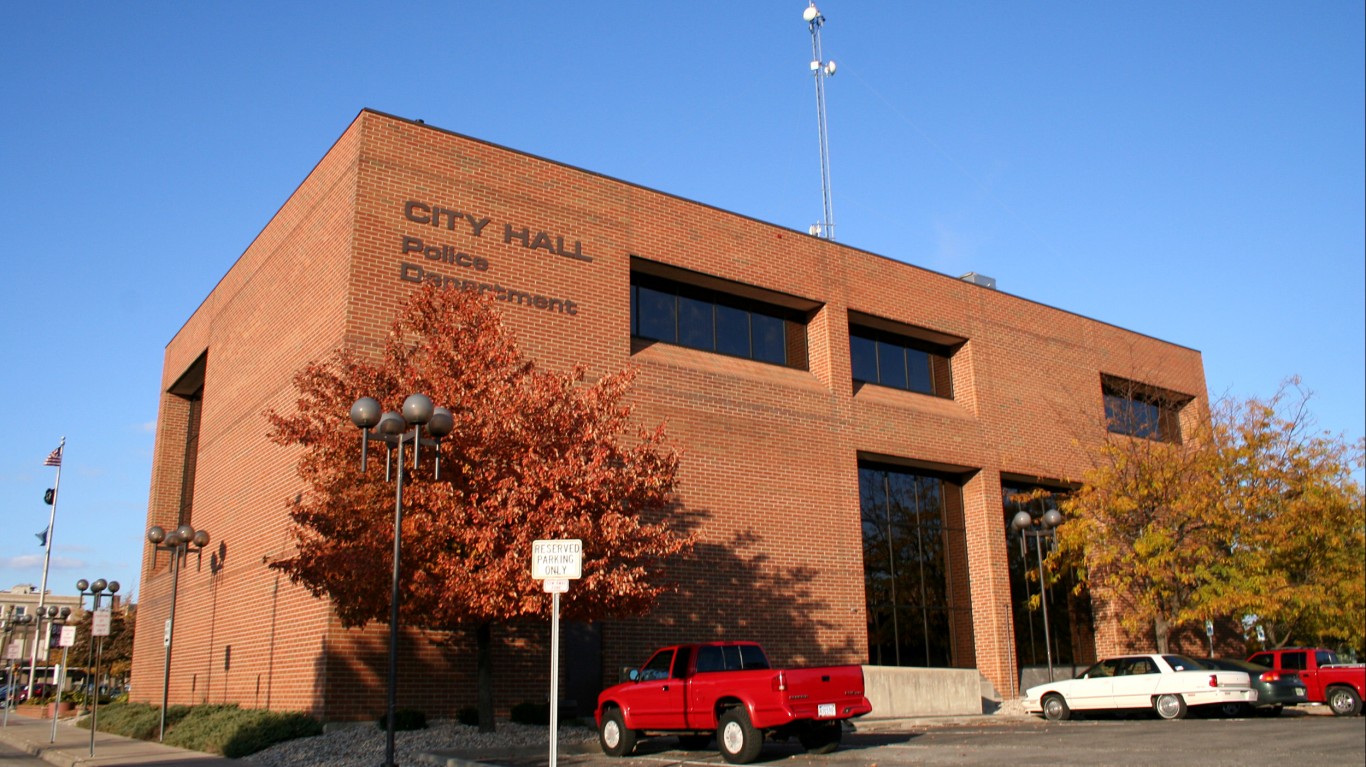
Indiana: Kokomo
Avg. new daily cases in Kokomo in week ending July 14: 8.3 per 100,000
Avg. new daily cases in Kokomo in week ending July 7: 7.4 per 100,000
COVID-19 cases in Kokomo as of July 14: 10,445 (12,686.6 per 100,000)
Peak pandemic unemployment in Kokomo: 33.8% (April 2020)
Kokomo population: 82,331 (280.9 people per sq. mi.)

Iowa: Des Moines-West Des Moines
Avg. new daily cases in Des Moines in week ending July 14: 12.1 per 100,000
Avg. new daily cases in Des Moines in week ending July 7: 1.6 per 100,000
COVID-19 cases in Des Moines as of July 14: 83,259 (12,236.1 per 100,000)
Peak pandemic unemployment in Des Moines: 12.0% (April 2020)
Des Moines population: 680,439 (188.3 people per sq. mi.)
These are all the counties in Iowa where COVID-19 is slowing (and where it’s still getting worse).
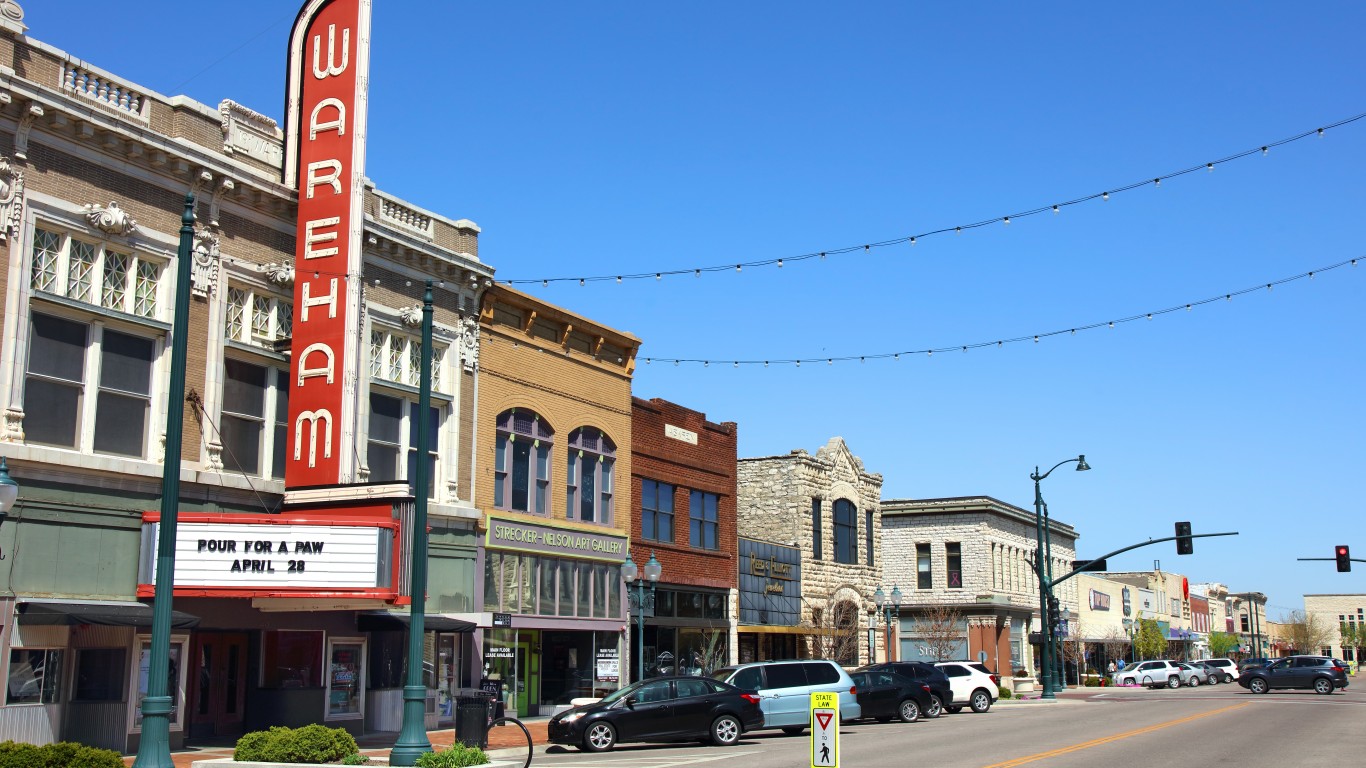
Kansas: Manhattan
Avg. new daily cases in Manhattan in week ending July 14: 9.0 per 100,000
Avg. new daily cases in Manhattan in week ending July 7: 8.0 per 100,000
COVID-19 cases in Manhattan as of July 14: 12,426 (9,347.9 per 100,000)
Peak pandemic unemployment in Manhattan: 9.0% (April 2020)
Manhattan population: 132,928 (72.4 people per sq. mi.)
These are all the counties in Kansas where COVID-19 is slowing (and where it’s still getting worse).
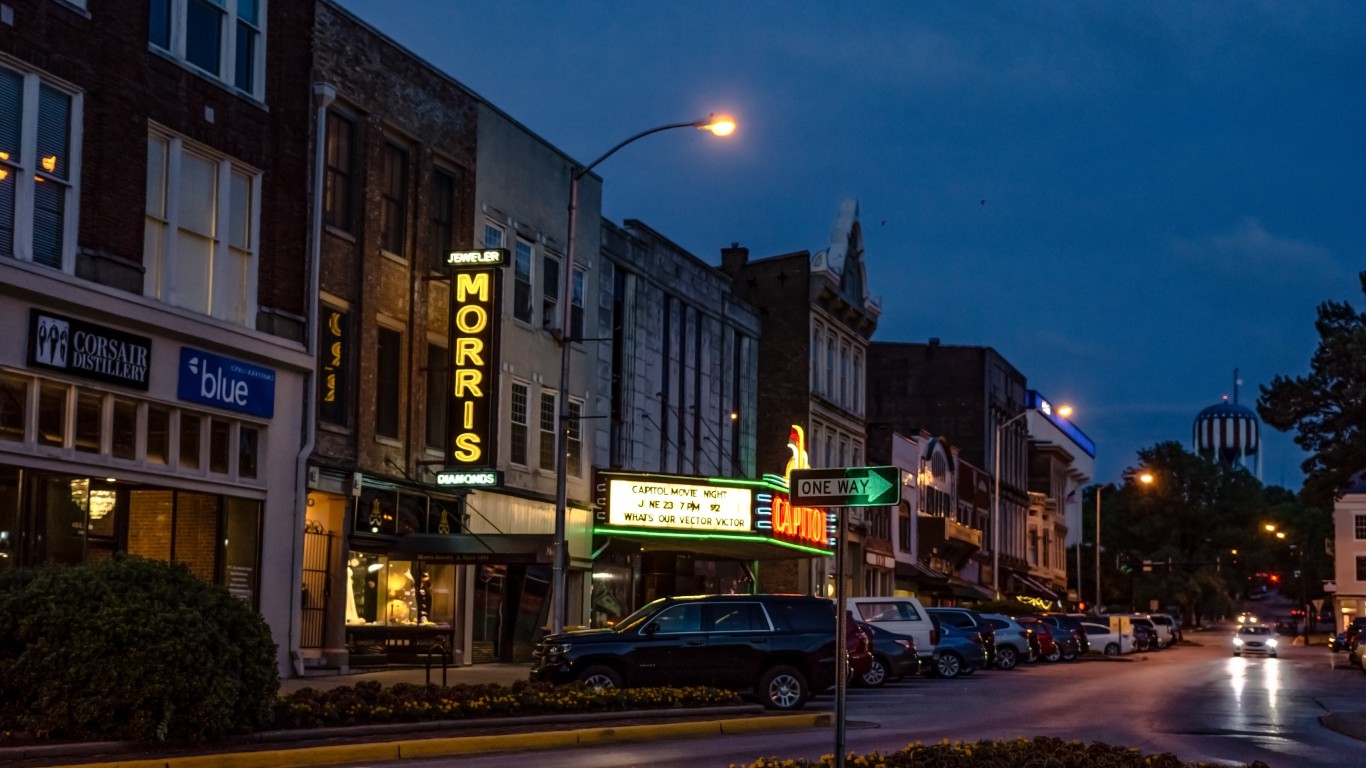
Kentucky: Bowling Green
Avg. new daily cases in Bowling Green in week ending July 14: 4.9 per 100,000
Avg. new daily cases in Bowling Green in week ending July 7: 3.3 per 100,000
COVID-19 cases in Bowling Green as of July 14: 20,915 (11,985.8 per 100,000)
Peak pandemic unemployment in Bowling Green: 18.8% (April 2020)
Bowling Green population: 174,498 (108.1 people per sq. mi.)

Louisiana: Hammond
Avg. new daily cases in Hammond in week ending July 14: 17.4 per 100,000
Avg. new daily cases in Hammond in week ending July 7: 11.5 per 100,000
COVID-19 cases in Hammond as of July 14: 13,434 (10,172.9 per 100,000)
Peak pandemic unemployment in Hammond: 18.1% (April 2020)
Hammond population: 132,057 (166.9 people per sq. mi.)

Maine: Lewiston-Auburn
Avg. new daily cases in Lewiston in week ending July 14: 2.9 per 100,000
Avg. new daily cases in Lewiston in week ending July 7: 2.6 per 100,000
COVID-19 cases in Lewiston as of July 14: 8,436 (7,840.0 per 100,000)
Peak pandemic unemployment in Lewiston: 10.3% (July 2020)
Lewiston population: 107,602 (230.0 people per sq. mi.)
These are all the counties in Maine where COVID-19 is slowing (and where it’s still getting worse).

Maryland: Cumberland, MD-WV
Avg. new daily cases in Cumberland in week ending July 14: 2.0 per 100,000
Avg. new daily cases in Cumberland in week ending July 7: 1.8 per 100,000
COVID-19 cases in Cumberland as of July 14: 10,051 (10,192.5 per 100,000)
Peak pandemic unemployment in Cumberland: 14.0% (April 2020)
Cumberland population: 98,612 (131.1 people per sq. mi.)

Massachusetts: Pittsfield
Avg. new daily cases in Pittsfield in week ending July 14: 1.5 per 100,000
Avg. new daily cases in Pittsfield in week ending July 7: 0.9 per 100,000
COVID-19 cases in Pittsfield as of July 14: 6,573 (5,199.1 per 100,000)
Peak pandemic unemployment in Pittsfield: 18.3% (June 2020)
Pittsfield population: 126,425 (136.4 people per sq. mi.)

Michigan: Battle Creek
Avg. new daily cases in Battle Creek in week ending July 14: 2.4 per 100,000
Avg. new daily cases in Battle Creek in week ending July 7: 2.6 per 100,000
COVID-19 cases in Battle Creek as of July 14: 14,589 (10,870.1 per 100,000)
Peak pandemic unemployment in Battle Creek: 25.6% (April 2020)
Battle Creek population: 134,212 (190.0 people per sq. mi.)

Minnesota: Minneapolis-St. Paul-Bloomington, MN-WI
Avg. new daily cases in Minneapolis in week ending July 14: 1.7 per 100,000
Avg. new daily cases in Minneapolis in week ending July 7: 1.5 per 100,000
COVID-19 cases in Minneapolis as of July 14: 383,692 (10,736.8 per 100,000)
Peak pandemic unemployment in Minneapolis: 10.4% (May 2020)
Minneapolis population: 3,573,609 (507.0 people per sq. mi.)

Mississippi: Jackson
Avg. new daily cases in Jackson in week ending July 14: 10.1 per 100,000
Avg. new daily cases in Jackson in week ending July 7: 9.3 per 100,000
COVID-19 cases in Jackson as of July 14: 56,904 (9,520.1 per 100,000)
Peak pandemic unemployment in Jackson: 15.0% (April 2020)
Jackson population: 597,727 (110.6 people per sq. mi.)
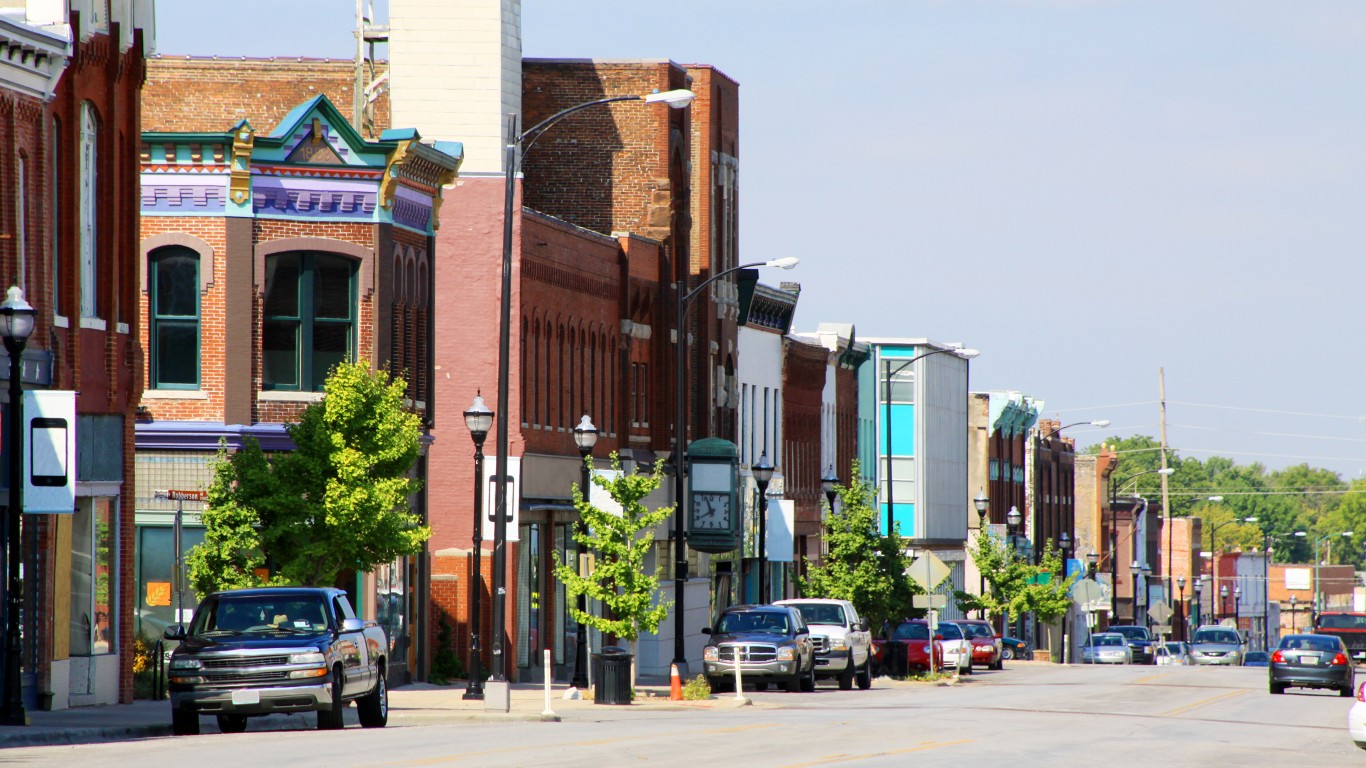
Missouri: Springfield
Avg. new daily cases in Springfield in week ending July 14: 48.6 per 100,000
Avg. new daily cases in Springfield in week ending July 7: 40.5 per 100,000
COVID-19 cases in Springfield as of July 14: 51,846 (11,211.5 per 100,000)
Peak pandemic unemployment in Springfield: 9.7% (April 2020)
Springfield population: 462,434 (153.8 people per sq. mi.)
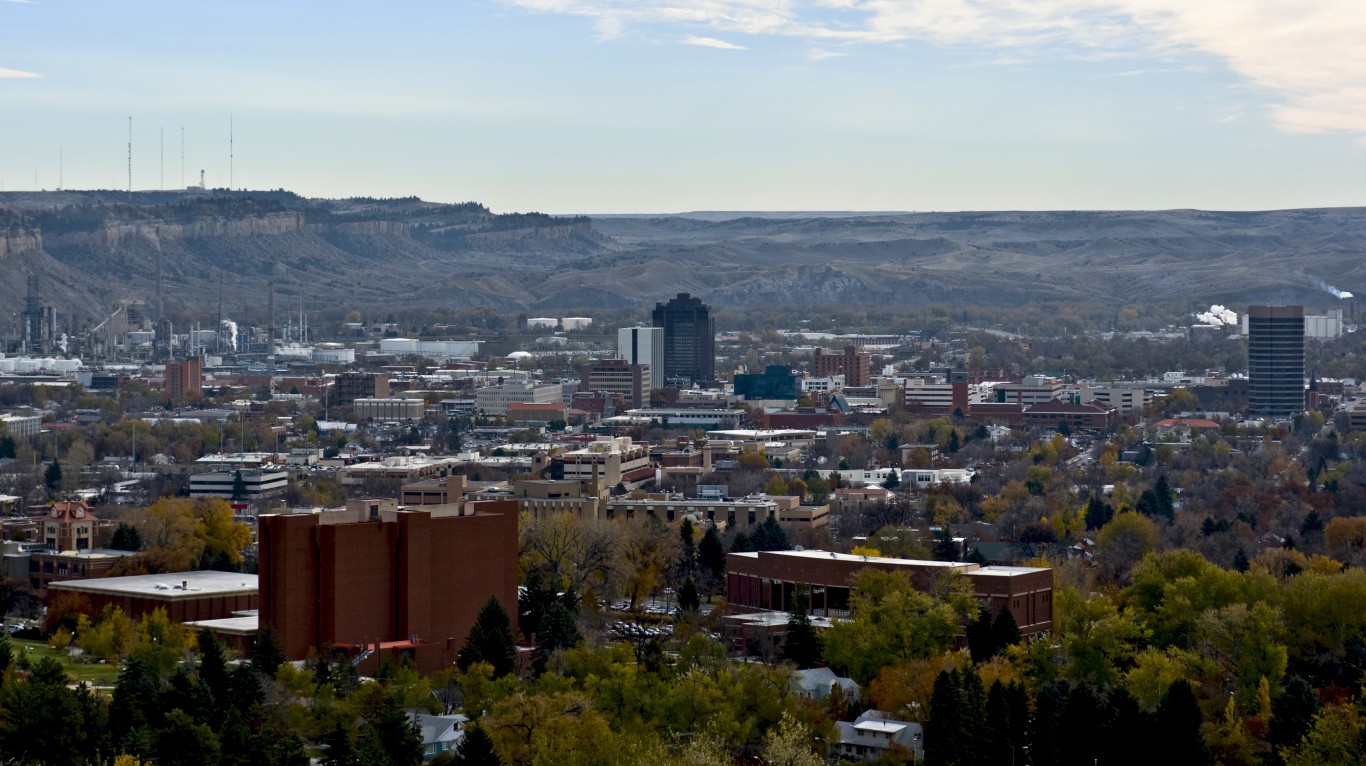
Montana: Billings
Avg. new daily cases in Billings in week ending July 14: 7.4 per 100,000
Avg. new daily cases in Billings in week ending July 7: 7.7 per 100,000
COVID-19 cases in Billings as of July 14: 19,830 (11,073.8 per 100,000)
Peak pandemic unemployment in Billings: 11.4% (April 2020)
Billings population: 179,071 (27.6 people per sq. mi.)

Nebraska: Omaha-Council Bluffs, NE-IA
Avg. new daily cases in Omaha in week ending July 14: 0.3 per 100,000
Avg. new daily cases in Omaha in week ending July 7: 0.2 per 100,000
COVID-19 cases in Omaha as of July 14: 116,725 (12,527.1 per 100,000)
Peak pandemic unemployment in Omaha: 10.2% (April 2020)
Omaha population: 931,779 (214.2 people per sq. mi.)

Nevada: Las Vegas-Henderson-Paradise
Avg. new daily cases in Las Vegas in week ending July 14: 16.4 per 100,000
Avg. new daily cases in Las Vegas in week ending July 7: 18.2 per 100,000
COVID-19 cases in Las Vegas as of July 14: 262,481 (12,029.4 per 100,000)
Peak pandemic unemployment in Las Vegas: 34.2% (April 2020)
Las Vegas population: 2,182,004 (276.5 people per sq. mi.)
These are all the counties in Nevada where COVID-19 is slowing (and where it’s still getting worse).

New Hampshire: Manchester-Nashua
Avg. new daily cases in Manchester in week ending July 14: 1.2 per 100,000
Avg. new daily cases in Manchester in week ending July 7: 1.1 per 100,000
COVID-19 cases in Manchester as of July 14: 36,443 (8,823.2 per 100,000)
Peak pandemic unemployment in Manchester: 17.5% (April 2020)
Manchester population: 413,035 (471.4 people per sq. mi.)

New Jersey: Ocean City
Avg. new daily cases in Ocean City in week ending July 14: 2.4 per 100,000
Avg. new daily cases in Ocean City in week ending July 7: 3.8 per 100,000
COVID-19 cases in Ocean City as of July 14: 9,310 (10,001.5 per 100,000)
Peak pandemic unemployment in Ocean City: 26.6% (June 2020)
Ocean City population: 93,086 (370.2 people per sq. mi.)

New Mexico: Santa Fe
Avg. new daily cases in Santa Fe in week ending July 14: 3.6 per 100,000
Avg. new daily cases in Santa Fe in week ending July 7: 3.0 per 100,000
COVID-19 cases in Santa Fe as of July 14: 10,656 (7,137.6 per 100,000)
Peak pandemic unemployment in Santa Fe: 13.2% (July 2020)
Santa Fe population: 149,293 (78.2 people per sq. mi.)
New York: Watertown-Fort Drum
Avg. new daily cases in Watertown in week ending July 14: 2.1 per 100,000
Avg. new daily cases in Watertown in week ending July 7: 1.8 per 100,000
COVID-19 cases in Watertown as of July 14: 6,192 (5,487.3 per 100,000)
Peak pandemic unemployment in Watertown: 17.1% (April 2020)
Watertown population: 112,842 (89.0 people per sq. mi.)

North Carolina: Fayetteville
Avg. new daily cases in Fayetteville in week ending July 14: 6.8 per 100,000
Avg. new daily cases in Fayetteville in week ending July 7: 4.6 per 100,000
COVID-19 cases in Fayetteville as of July 14: 47,504 (9,151.2 per 100,000)
Peak pandemic unemployment in Fayetteville: 15.8% (May 2020)
Fayetteville population: 519,101 (316.9 people per sq. mi.)
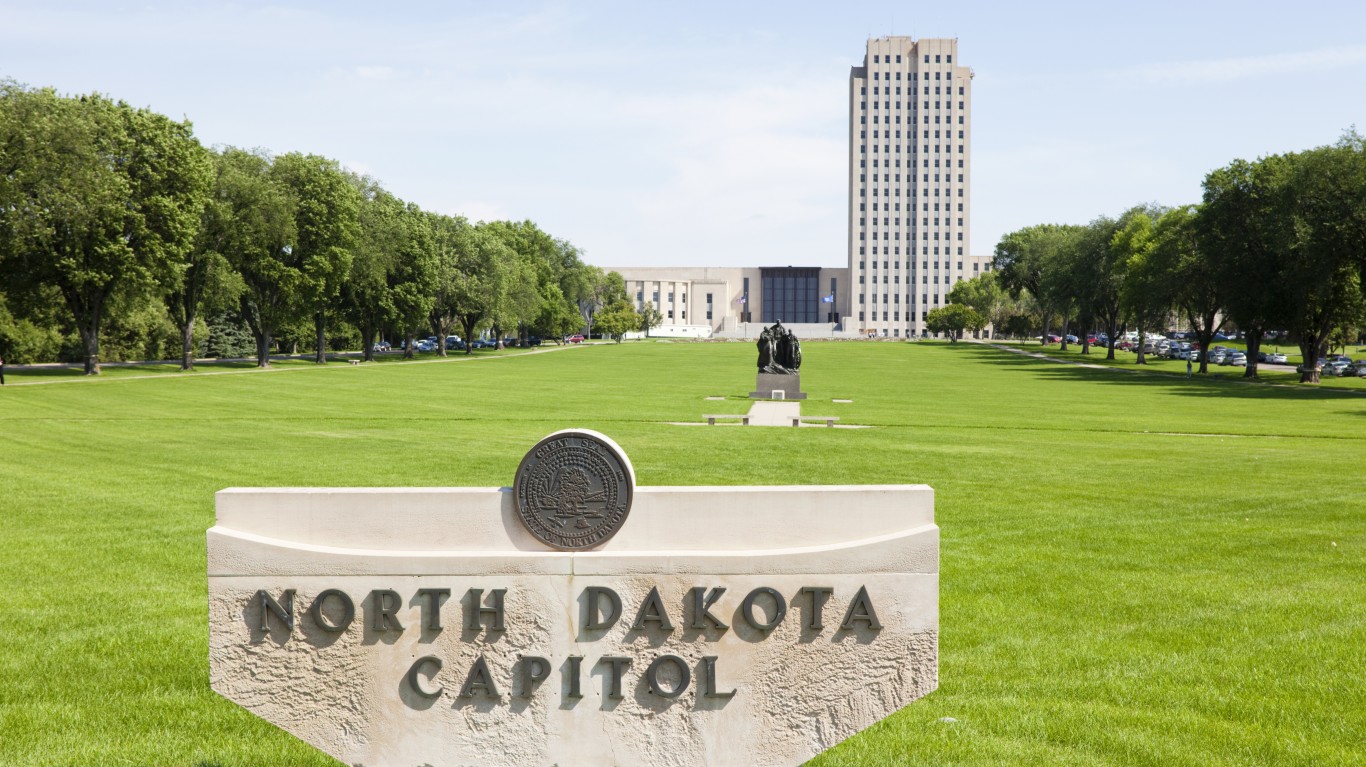
North Dakota: Bismarck
Avg. new daily cases in Bismarck in week ending July 14: 0.8 per 100,000
Avg. new daily cases in Bismarck in week ending July 7: 1.9 per 100,000
COVID-19 cases in Bismarck as of July 14: 21,550 (16,901.6 per 100,000)
Peak pandemic unemployment in Bismarck: 9.5% (April 2020)
Bismarck population: 127,503 (29.8 people per sq. mi.)

Ohio: Cincinnati, OH-KY-IN
Avg. new daily cases in Cincinnati in week ending July 14: 3.6 per 100,000
Avg. new daily cases in Cincinnati in week ending July 7: 2.3 per 100,000
COVID-19 cases in Cincinnati as of July 14: 224,171 (10,181.5 per 100,000)
Peak pandemic unemployment in Cincinnati: 14.5% (April 2020)
Cincinnati population: 2,201,741 (483.6 people per sq. mi.)
These are all the counties in Ohio where COVID-19 is slowing (and where it’s still getting worse).

Oklahoma: Lawton
Avg. new daily cases in Lawton in week ending July 14: 15.9 per 100,000
Avg. new daily cases in Lawton in week ending July 7: 16.7 per 100,000
COVID-19 cases in Lawton as of July 14: 15,245 (11,945.6 per 100,000)
Peak pandemic unemployment in Lawton: 19.5% (April 2020)
Lawton population: 127,620 (75.0 people per sq. mi.)

Oregon: Albany-Lebanon
Avg. new daily cases in Albany in week ending July 14: 7.9 per 100,000
Avg. new daily cases in Albany in week ending July 7: 9.9 per 100,000
COVID-19 cases in Albany as of July 14: 5,814 (4,649.4 per 100,000)
Peak pandemic unemployment in Albany: 15.2% (April 2020)
Albany population: 125,048 (54.6 people per sq. mi.)
These are all the counties in Oregon where COVID-19 is slowing (and where it’s still getting worse).

Pennsylvania: Gettysburg
Avg. new daily cases in Gettysburg in week ending July 14: 1.9 per 100,000
Avg. new daily cases in Gettysburg in week ending July 7: 2.7 per 100,000
COVID-19 cases in Gettysburg as of July 14: 9,696 (9,462.3 per 100,000)
Peak pandemic unemployment in Gettysburg: 14.9% (April 2020)
Gettysburg population: 102,470 (197.6 people per sq. mi.)

Rhode Island: Providence-Warwick, RI-MA
Avg. new daily cases in Providence in week ending July 14: 1.7 per 100,000
Avg. new daily cases in Providence in week ending July 7: 1.6 per 100,000
COVID-19 cases in Providence as of July 14: 207,754 (12,838.0 per 100,000)
Peak pandemic unemployment in Providence: 18.5% (April 2020)
Providence population: 1,618,268 (1,019.8 people per sq. mi.)

South Carolina: Columbia
Avg. new daily cases in Columbia in week ending July 14: 5.7 per 100,000
Avg. new daily cases in Columbia in week ending July 7: 3.4 per 100,000
COVID-19 cases in Columbia as of July 14: 94,857 (11,507.9 per 100,000)
Peak pandemic unemployment in Columbia: 9.4% (May 2020)
Columbia population: 824,278 (222.6 people per sq. mi.)
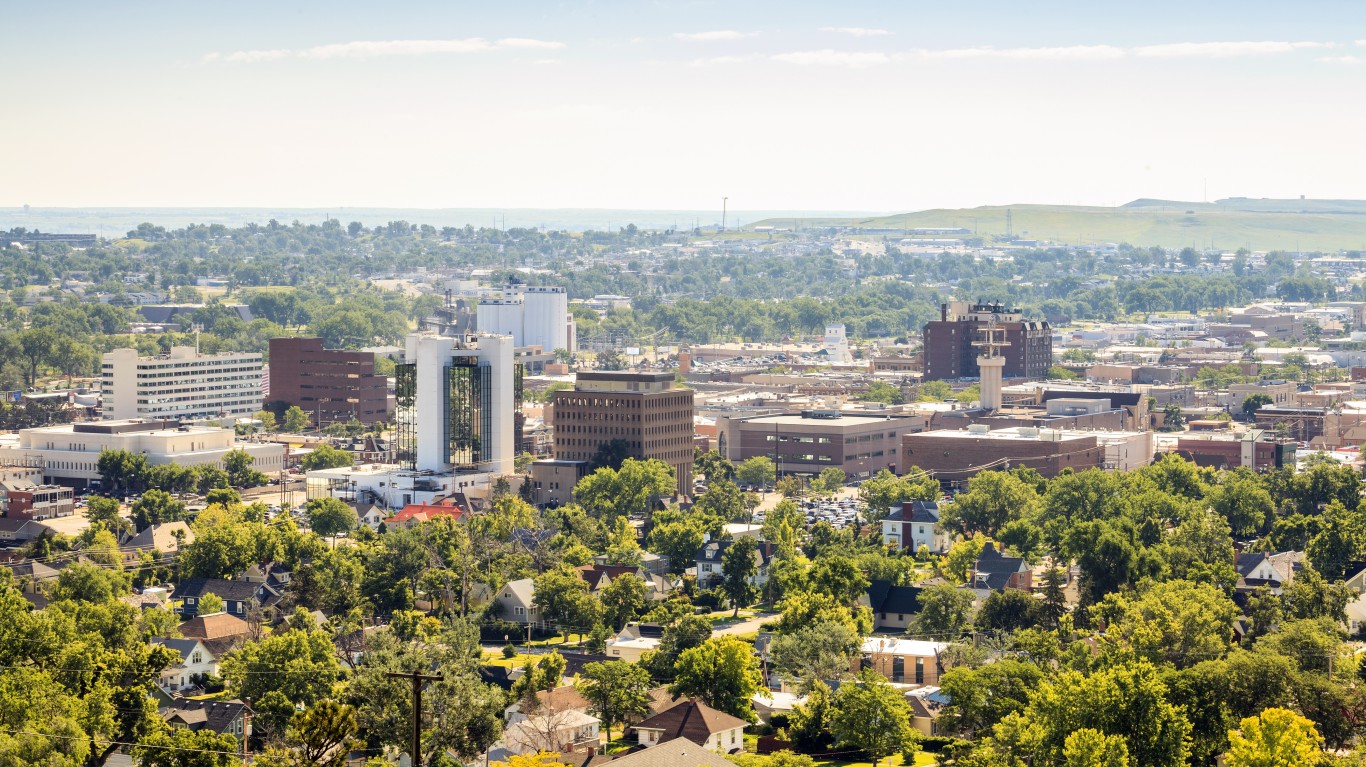
South Dakota: Rapid City
Avg. new daily cases in Rapid City in week ending July 14: 3.3 per 100,000
Avg. new daily cases in Rapid City in week ending July 7: 2.9 per 100,000
COVID-19 cases in Rapid City as of July 14: 16,775 (12,120.5 per 100,000)
Peak pandemic unemployment in Rapid City: 13.8% (April 2020)
Rapid City population: 138,402 (22.2 people per sq. mi.)

Tennessee: Memphis, TN-MS-AR
Avg. new daily cases in Memphis in week ending July 14: 5.9 per 100,000
Avg. new daily cases in Memphis in week ending July 7: 3.0 per 100,000
COVID-19 cases in Memphis as of July 14: 149,671 (11,172.6 per 100,000)
Peak pandemic unemployment in Memphis: 13.4% (April 2020)
Memphis population: 1,339,623 (292.6 people per sq. mi.)

Texas: Laredo
Avg. new daily cases in Laredo in week ending July 14: 9.9 per 100,000
Avg. new daily cases in Laredo in week ending July 7: 1.6 per 100,000
COVID-19 cases in Laredo as of July 14: 47,029 (17,193.6 per 100,000)
Peak pandemic unemployment in Laredo: 14.3% (May 2020)
Laredo population: 273,526 (81.4 people per sq. mi.)
These are all the counties in Texas where COVID-19 is slowing (and where it’s still getting worse).
Utah: Provo-Orem
Avg. new daily cases in Provo in week ending July 14: 11.8 per 100,000
Avg. new daily cases in Provo in week ending July 7: 10.8 per 100,000
COVID-19 cases in Provo as of July 14: 100,596 (16,309.6 per 100,000)
Peak pandemic unemployment in Provo: 8.1% (April 2020)
Provo population: 616,791 (114.3 people per sq. mi.)
These are all the counties in Utah where COVID-19 is slowing (and where it’s still getting worse).

Vermont: Burlington-South Burlington
Avg. new daily cases in Burlington in week ending July 14: 1.1 per 100,000
Avg. new daily cases in Burlington in week ending July 7: 0.9 per 100,000
COVID-19 cases in Burlington as of July 14: 9,805 (4,481.6 per 100,000)
Peak pandemic unemployment in Burlington: 14.8% (April 2020)
Burlington population: 218,784 (174.7 people per sq. mi.)

Virginia: Richmond
Avg. new daily cases in Richmond in week ending July 14: 4.5 per 100,000
Avg. new daily cases in Richmond in week ending July 7: 2.5 per 100,000
COVID-19 cases in Richmond as of July 14: 103,328 (8,139.1 per 100,000)
Peak pandemic unemployment in Richmond: 11.7% (April 2020)
Richmond population: 1,269,530 (290.9 people per sq. mi.)

Washington: Walla Walla
Avg. new daily cases in Walla Walla in week ending July 14: 19.7 per 100,000
Avg. new daily cases in Walla Walla in week ending July 7: 22.0 per 100,000
COVID-19 cases in Walla Walla as of July 14: 5,560 (9,210.6 per 100,000)
Peak pandemic unemployment in Walla Walla: 12.7% (April 2020)
Walla Walla population: 60,365 (47.5 people per sq. mi.)

West Virginia: Huntington-Ashland, WV-KY-OH
Avg. new daily cases in Huntington in week ending July 14: 3.5 per 100,000
Avg. new daily cases in Huntington in week ending July 7: 3.4 per 100,000
COVID-19 cases in Huntington as of July 14: 34,482 (9,529.8 per 100,000)
Peak pandemic unemployment in Huntington: 17.2% (April 2020)
Huntington population: 361,832 (144.7 people per sq. mi.)

Wisconsin: Milwaukee-Waukesha
Avg. new daily cases in Milwaukee in week ending July 14: 1.7 per 100,000
Avg. new daily cases in Milwaukee in week ending July 7: 1.4 per 100,000
COVID-19 cases in Milwaukee as of July 14: 193,506 (12,284.4 per 100,000)
Peak pandemic unemployment in Milwaukee: 14.1% (April 2020)
Milwaukee population: 1,575,223 (1,082.8 people per sq. mi.)
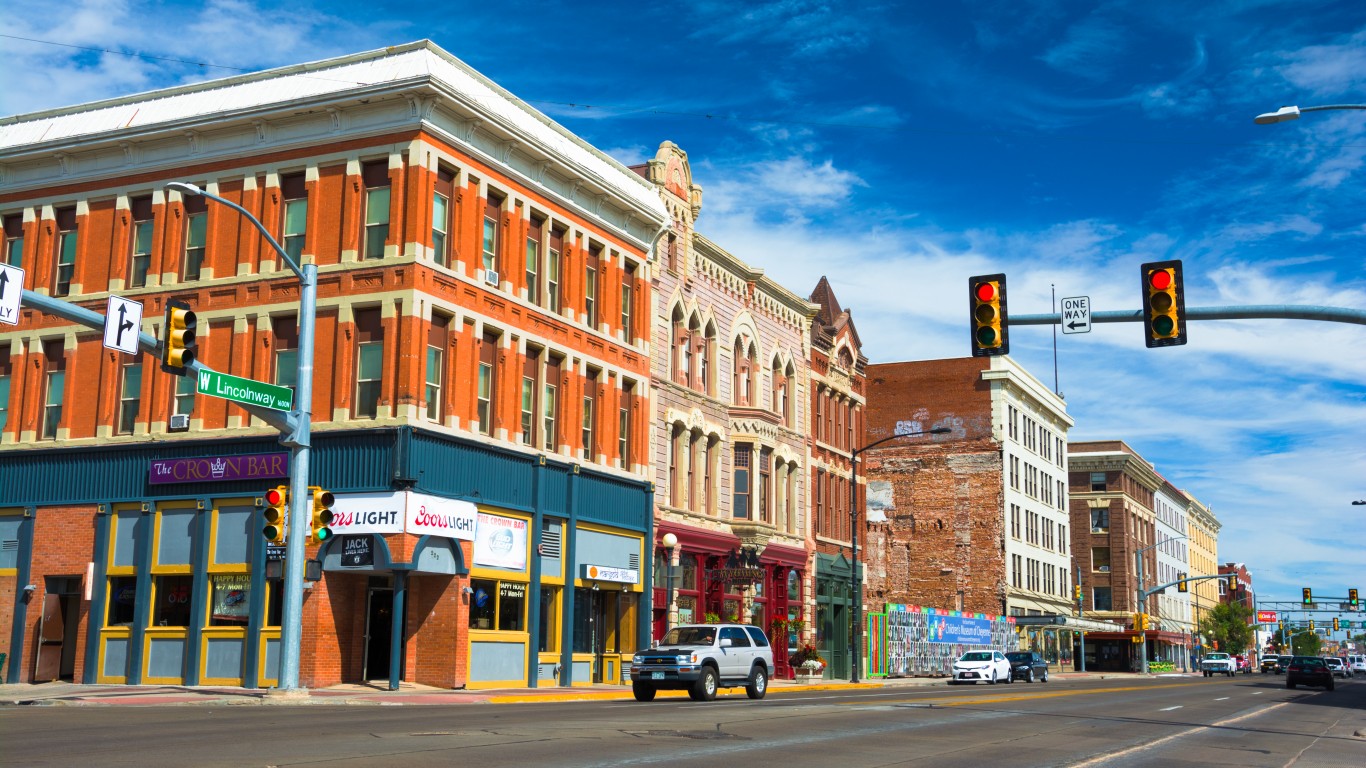
Wyoming: Cheyenne
Avg. new daily cases in Cheyenne in week ending July 14: 36.9 per 100,000
Avg. new daily cases in Cheyenne in week ending July 7: 37.9 per 100,000
COVID-19 cases in Cheyenne as of July 14: 10,763 (10,946.9 per 100,000)
Peak pandemic unemployment in Cheyenne: 9.2% (April 2020)
Cheyenne population: 98,320 (36.6 people per sq. mi.)
Click here to see all coronavirus data for every state.
Want retirement to come a few years earlier than you’d planned? Or are you ready to retire now, but want an extra set of eyes on your finances?
Now you can speak with up to 3 financial experts in your area for FREE. By simply clicking here you can begin to match with financial professionals who can help you build your plan to retire early. And the best part? The first conversation with them is free.
Click here to match with up to 3 financial pros who would be excited to help you make financial decisions.
Have questions about retirement or personal finance? Email us at [email protected]!
By emailing your questions to 24/7 Wall St., you agree to have them published anonymously on a673b.bigscoots-temp.com.
By submitting your story, you understand and agree that we may use your story, or versions of it, in all media and platforms, including via third parties.
Thank you for reading! Have some feedback for us?
Contact the 24/7 Wall St. editorial team.